As part of our study of Antarctica, we did a more detail study of Penguins. We read a variety of non-fiction books that we had in our selection at home.
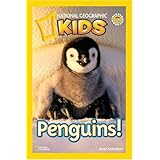

These were the first non-fiction books Georgie has attempted to read. The National Geographic Kids book is a Step 2 reader, while the Scholastic one is Step 1. He did okay and was able to read both of them with some assistance.
We visited
National Geographic Kids and viewed the pictures and videos on penguins. I think this is a site that we will be using frequently as we go through our Continents studies. It has an amazing selection of games, videos and pictures covering Animals, Countries and News. Thankfully Georgie didn’t discover the games here until we were finished for the day.
Georgie played the March of the Penguins game at the
National Geographic website. The idea of the game is to keep your egg warm on your feet. You have to use the mouse to keep moving while collecting fish to eat and avoiding other penguins, holes in the ice and rocks. Hitting obstacles can cause the egg to fall off your feet and you will have to retrieve it. If the egg spends too much time on the ice it will die. Each time you keep the egg warm for a designated amount of time you advance to a new, harder level.
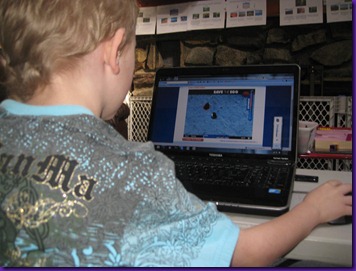
Once Georgie got tired of this game, we returned to the National Geographic Kids website and explored the games there, which meant “formal” school was done for the day.
We didn’t get back to our lessons until after the weekend. I had plans to do some of the activities from a free sample from Itty Bitty Bookworm for the book
Five Little Penguins Slipping on the Ice. Unfortunately (only for this activity, I’m actually very glad), New Jersey experienced a thaw over the weekend and it is supposed to stick around for a while. The main activity we were going to do involved freezing a pan of water and doing an experiment checking which of various objects would slide. We don’t have room in our freezer for a pan of water so I put it outside on our deck. I’m sure you can imagine why the thaw messed up our plans. We did read
Five Little Penguins Slipping on the Ice and do one activity. (edited on 2/9/11: I usually won't update my posts except to fix spelling or grammar but I had to address this. Evidently my source, who shall remain nameless, was a little off about the warmer weather coming. In fact, we are currently experiencing high's in the teens and windchills in the negatives. :-( So, if I can find the pan I used for water, we may try this experiment after all.)
An activity similar to our next one does appear in the Itty Bitty Bookworm unit although I also found the idea a bunch of other places. We had learned through various books, videos and games that penguin fathers keep the eggs warm by balancing them on their feet. So, I filled two balloons with rice to serve as eggs and let the kids try to keep them off the floor by holding them with their feet.

Georgie did okay even once he started moving around but Vicki decided she was going to keep her egg warm by cuddling him in her hands.
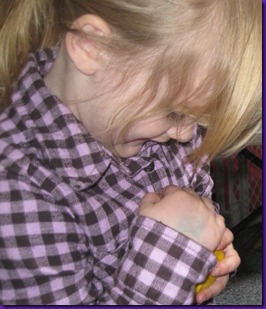
After finishing up our penguin unit, we discussed some of the differences between the Arctic and Antarctic. We read the Cat in the Hat book
Ice is Nice All About the North and South Poles and read some more from
DK Eyewitness Arctic and Antarctica. We learned about the Polar Habitats which include Antarctica and the Arctic Tundra.
I wanted to emphasize to the kids that polar bears and penguins do not live together except in zoos and cartoons. We played a sorting game using pictures from
Confessions of a Homeschooler and printed off the internet. We used links from our Intellego units to help research our answers. For Arctic animals, we used a Canadian website and for Antarctic animals, we used Cool Antarctica. This was a lot harder than sorting animals by habitat.

After we finished, we discussed some of the reasons there were more animals and more variety in the Arctic. Antarctica has a much harsher climate, fewer plants, fewer sources of food, even the summers are cold and it is technically a desert. The Arctic is a paradise in comparison.
We played an Arctic Animal file folder game from
File Folder Fun to learn more about some of the animals found in the Arctic. It consists of informational cards that you match up with drawings of the animals. Vicki was able to answer the polar bear question before Georgie could.

Next, we used our Scholastic Instant Dioramas (downloaded at their recent dollar sale), Artic Animals Toob and some of our own toy animals to make a Polar Habitats Playset. I used a large disposable roasting pan and filled it with shredded paper “snow”. I used a piece of cardboard to separate it into two sides and attached the pictures from the Diorama book to it, as well as to the sides of the pan. The kids were not interested in coloring the diorama pictures because they were too curious about what we were going to do with them, so I added a few Animal Planet stickers we had.
The Arctic side of our diorama....
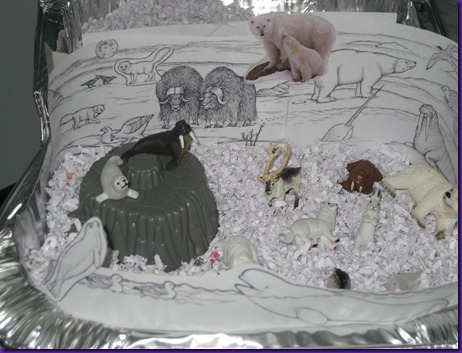
and the Antarctica side.
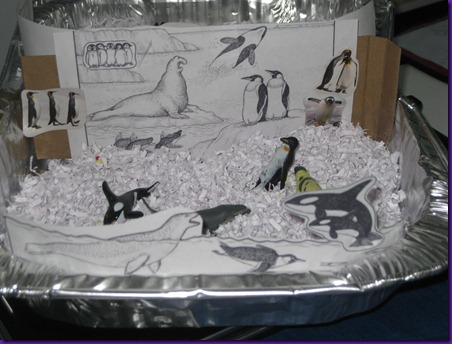
The kids had a fun time playing with it but I’m sure the penguin went visiting with the polar bears. We even had a sea fan and an eel come to visit from the marine animal toys Vicki played with over the weekend.
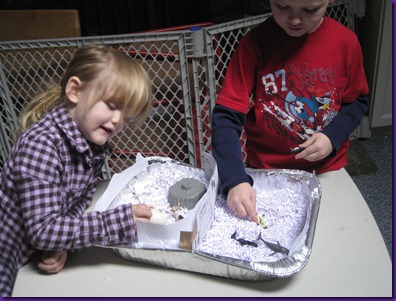
We finished up by watching the Magic School Bus In the Arctic.

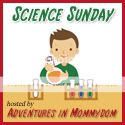

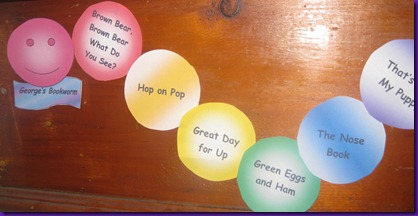

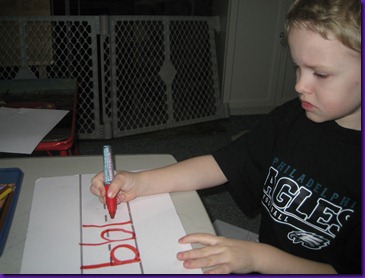
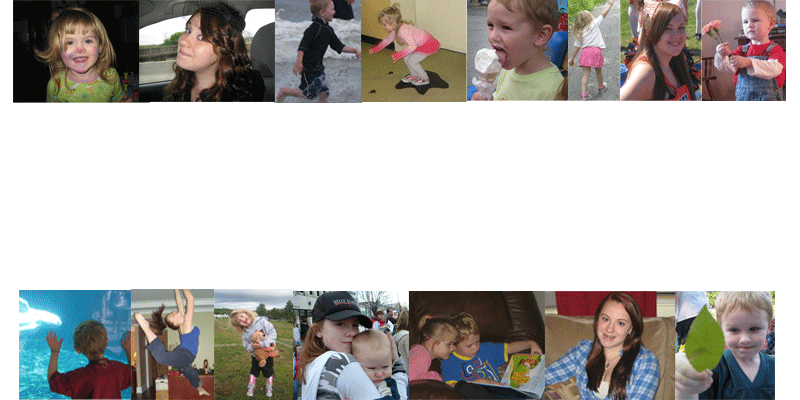
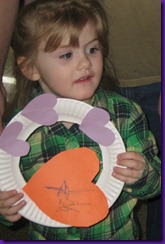

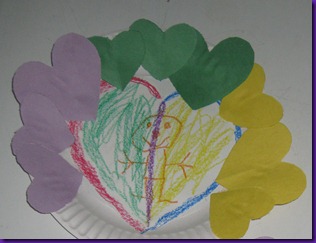
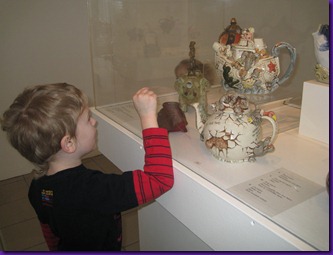
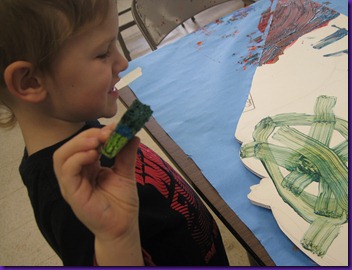
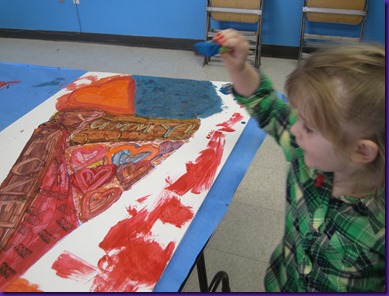
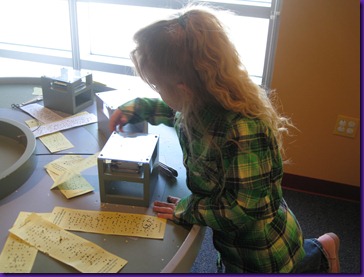
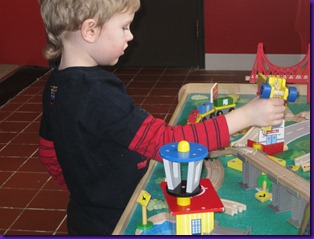
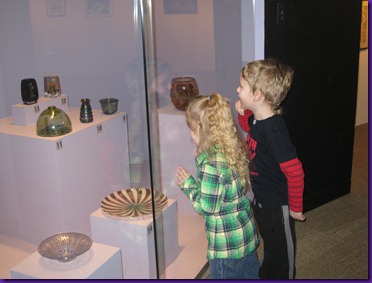













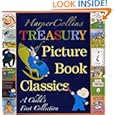
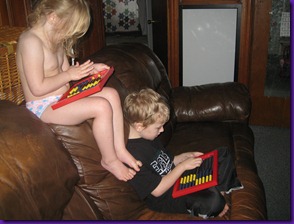
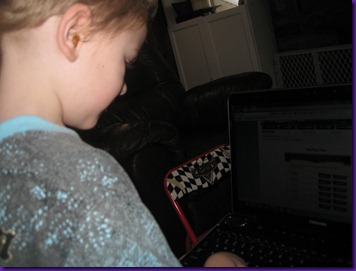
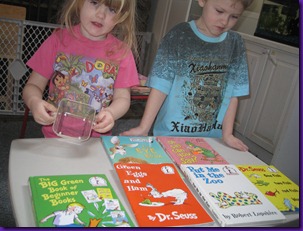


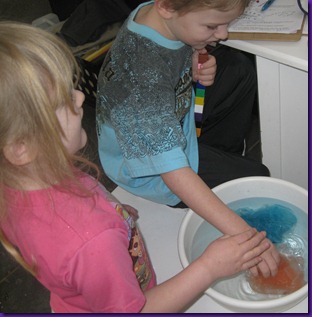
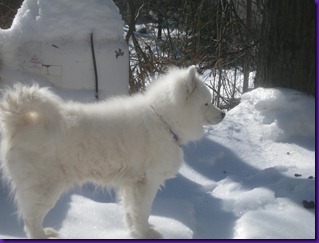

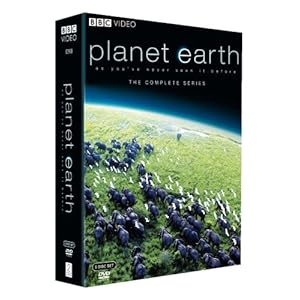
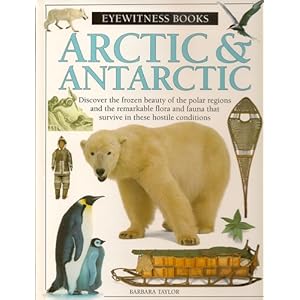
![Scholastic Atlas of the World [SCHOLASTIC ATLAS OF THE WO -OS] [Paperback]](http://ecx.images-amazon.com/images/I/51h9qb4REIL._SL500_AA300_.jpg)

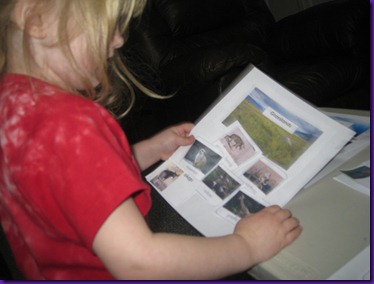
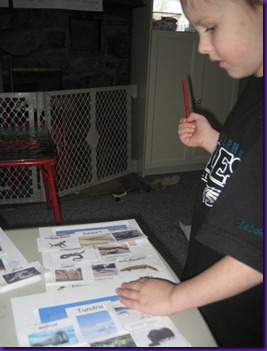

![Magic School Bus: Hops Home [VHS]](http://ecx.images-amazon.com/images/I/511A4YJHFQL._SL500_AA300_.jpg)
